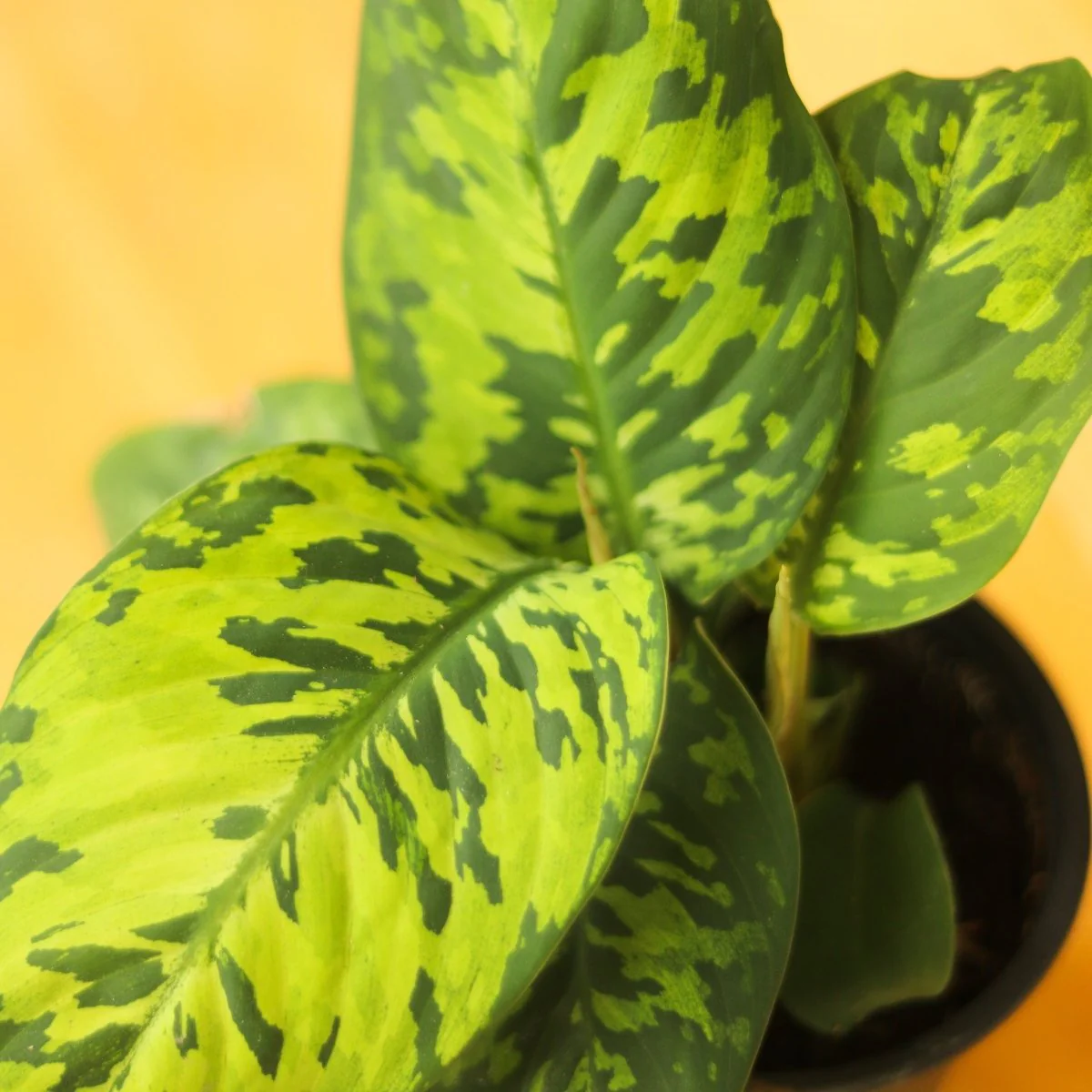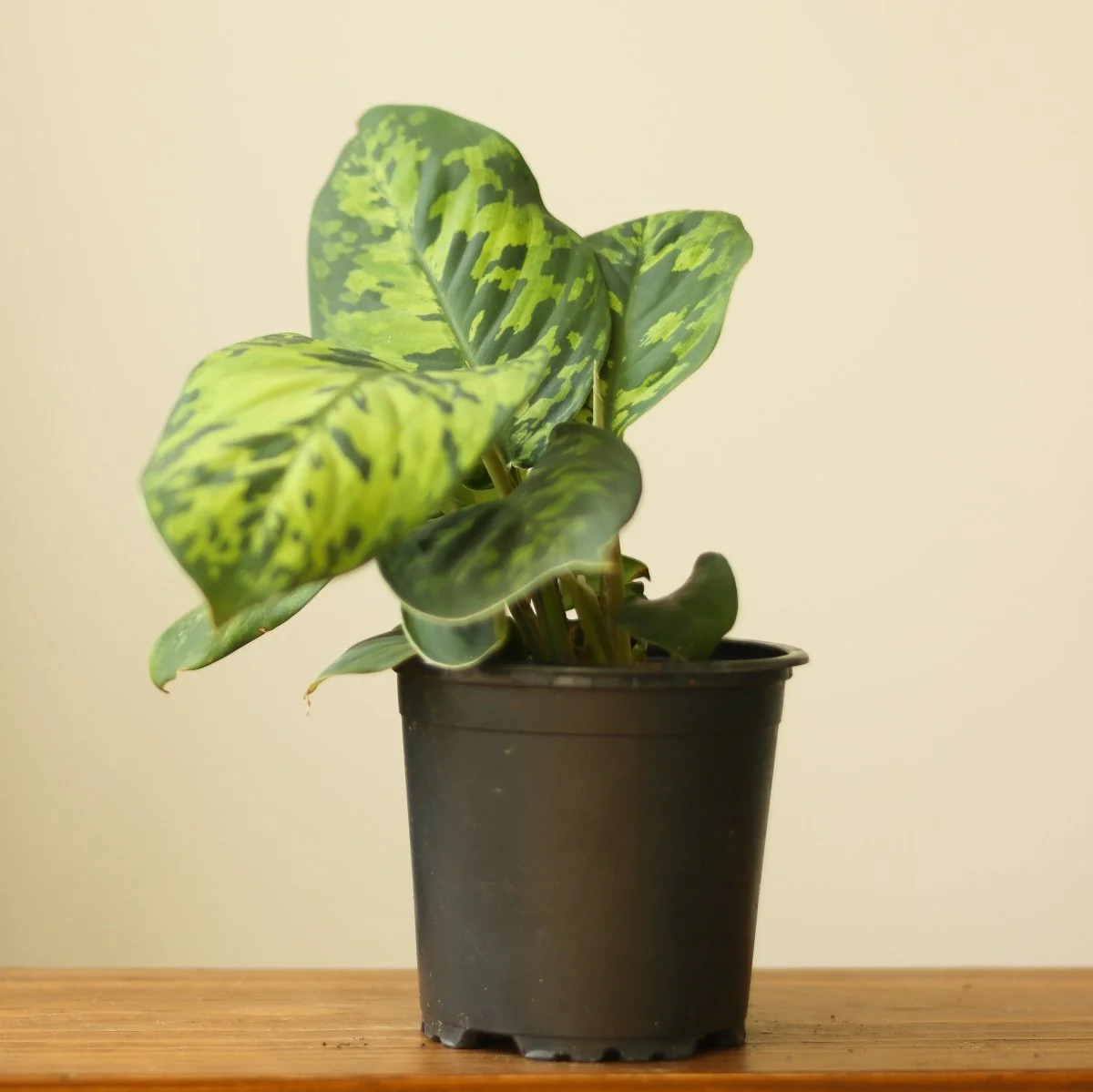-
Detail
Homalos means “flat” while Mene means “moon.” The Army Homalomena resembles the popular Selby Homalomena, but have a more dappled, pronounced variegated. Army Homalomena is characterized by its light-to-medium green oval foliage with confetti-like coloration. Leaves develop from the center of the plant and grow upwards and outwards. This plant is easy to care for and great for new plant parents. Army Homalomena prefers bright to medium indirect light for best growth, and while it is not too fussy about frequent watering, it does not do well under complete water-deficient conditions.
The Army Homalomena is a tropical plant native to the humid rainforests of Southeastern Asia and is a surefire favorite in your collection. Homalomena plants are as old as 3000 years and have been used to cure several diseases. The name Homalomena comes from a mistranslated name in the Malaysian language. Army Homalomena are not big fans of drying out completely, so please make sure you keep an eye on watering.
Ed's Plant Profile
Botanical Name: Homalomena wallisii
Common Name(s): Army Homalomena
Family: Araceae
Native Range: Rainforests of Southeastern AsiaEd's Care Guide
Care Level: Easy
Light: Bright to medium indirect light
Water: Keep soil moist, avoid overwatering and allowing to dry out completely
Humidity: High
Temperature: 60-90F, but can withstand temperatures as low as 40 F
Pruning: Prune as needed to remove brown or dead leaves
Feeding: Fertilize regularly with a liquid plant food used at the strength recommended by the manufacturer
Propagation: Stem tip cuttings
Growth: Compact
Pests: Generally not subject to pests
Toxicity: Toxic to humans and pets
Home
/
Homalomena wallisii - Army Homalomena





